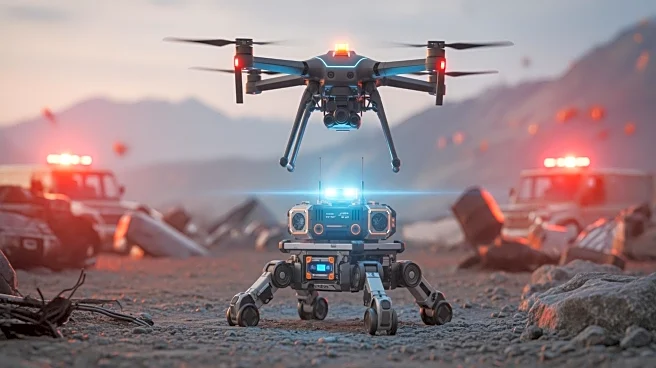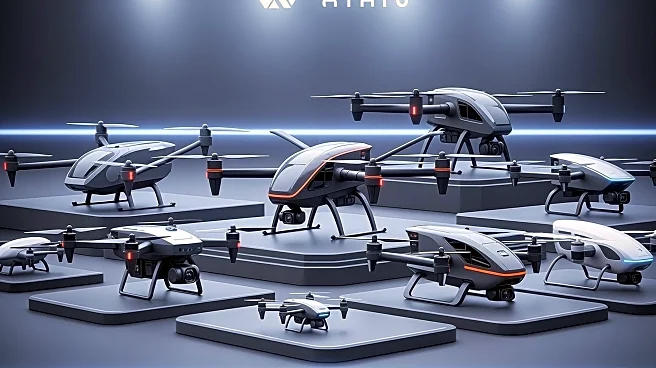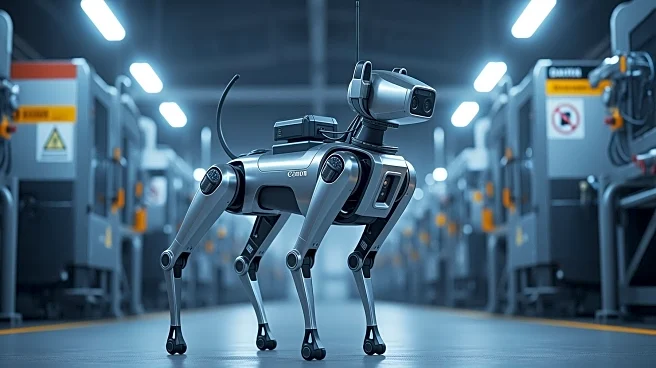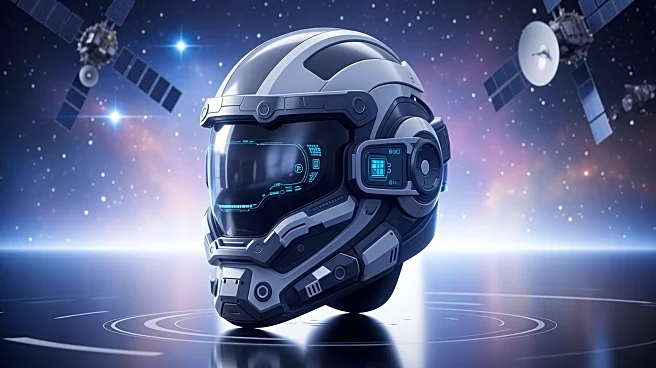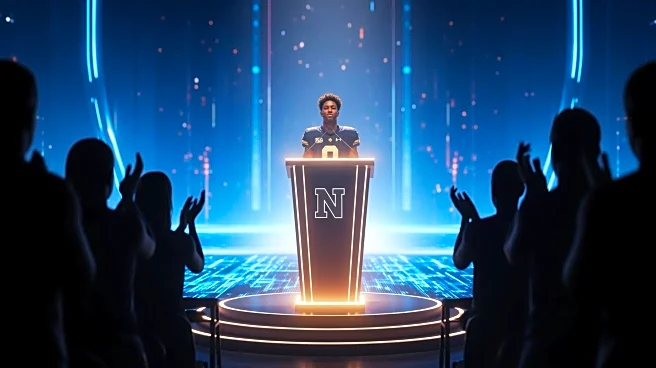What's Happening?
The University of Maryland's RoboScout Team is advancing the use of drones and robots in disaster response scenarios. Participating in the DARPA Triage Challenge, the team demonstrated their technology
in Perry, Georgia, and at the Maryland Robotics Center. The initiative involves robotic drones arriving first at disaster sites to scan for survivors and relay their locations to robot dogs and medics. These robots, equipped with AI, assess the severity of injuries and communicate with medics to prioritize treatment. The Boston Dynamics Spot dog, Apollo, is part of the demonstration, capable of scanning for vital signs and interacting with patients using a large language model chat system. This technology aims to address situations where there are more patients than medics available, enhancing the efficiency of triage during mass casualty incidents.
Why It's Important?
The integration of drones and robots in disaster response represents a significant advancement in emergency management. By automating the triage process, these technologies can potentially save lives by ensuring that the most critically injured receive immediate attention. This development is crucial in scenarios like earthquakes or major accidents where medical responders are overwhelmed. The collaboration with medical personnel from the University of Maryland School of Medicine provides valuable insights to refine these technologies further. As these systems become more sophisticated, they could transform emergency response protocols, making them faster and more effective, ultimately benefiting public safety and healthcare systems.
What's Next?
The RoboScout Team plans to continue refining their AI and language models through ongoing simulations, with the goal of deploying robots and drones as active first responders in real-world disasters within a few years. The data collected from these exercises will inform best practices and operational guidelines for future deployments. As the technology evolves, it is expected that more emergency response teams will adopt similar systems, potentially leading to widespread changes in disaster management strategies.
Beyond the Headlines
The use of AI-driven robots in disaster response raises ethical and operational questions about the role of technology in life-and-death situations. Ensuring the reliability and accuracy of these systems is paramount, as is addressing concerns about privacy and data security when handling sensitive medical information. The collaboration between engineers and medical professionals highlights the interdisciplinary approach needed to tackle these challenges, paving the way for innovations that could redefine emergency response.
